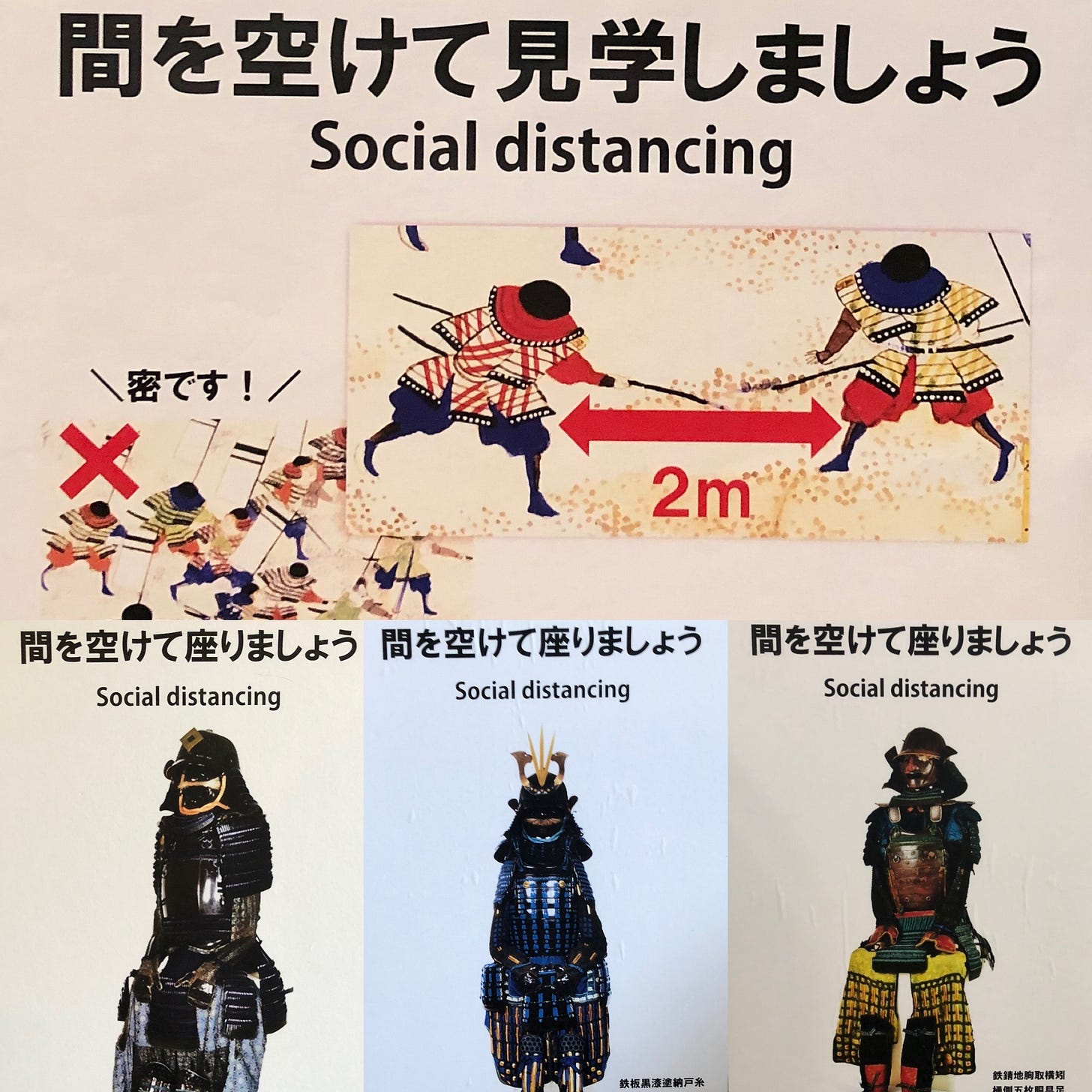Bushu-Araki Station (RotW #5)
The fifth of the Musashi Stations, and our last 'Bushu' for a while.
This is the fifth instalment of my Railways of the Warrior (RotW) series.
Name in kanji : 武州荒木
Kanji meaning: unseasoned timber
Station opened : 1st April 1921
Trainlines: Chichibu Main Line
# Passengers daily : 532
Located in: Gyoda, Chichibu, Saitama Prefecture
There’s not really much actually at Bushu-Araki, but it’s in a part of Saitama where ancient burial mounds – kofun – can be found pretty much everywhere.
虚空蔵山古墳 / Kozukoyama is one small example.
Just across the road from that, you can find Omishinkan temple / 小見真観寺which has another burial mound tucked away in its grounds.
If you’re really into your kofun, there are much more impressive examples to be found at the Sakitama Burial Mounds Museum.
You should probably also have a wander around Gyoda city, a sockys little place with a replica castle, a steam train in a park, and this funky looking record store:
Bushu-Araki is on the same line as Bushu-Hino & Bushu-Nakagawa but in the other direction, past Kumagaya. It can be found on the north side of Gyoda city, itself home to a great looking replica castle, a steam train in a park, and a whole lot of socks. A visit here is a true tabi tabi / 足袋旅.
I’m not, as you might assume from the puntastic ending to that sentence, joking about the socks. Gyoda was a massive producer of traditional Japanese tabi for centuries, at one point producing 80% of Japan’s foot warmers. Nowadays, there’s a heritage trail that features lots of buildings related to sock production (former warehouses, manufacturers, that kind of thing) and there’s even a sock museum.
I didn’t have a whole lot of time to spend in Gyoda itself, so I skipped the socks and instead settled for the more pedestrian city museum, located behind the reconstructed Oshi castle.
It was well worth the visit and had a smattering of everything for which the area is famous – the aforementioned footwear, artifacts relating to the castle, and a little bit about the kofun – the ancient burial mounds which will feature quite prominently in the later stages of this adventure.
It also had these spectacular social distancing posters:
But enough about the centre of Gyoda. We came out here for a Musashi station, albeit one using the bushu reading, so let’s tootle over there now.
The area around Bushu-Araki station is that curious blend of rural & suburban that you find out in the Japanese ‘countryside’.
The vista on one side of the station consists of rice fields stretching out to the horizon; the other exits on to a small side street that leads up to a busier road which curves on across a small bridge, until it joins an even bigger road back to Gyoda.
Since there really isn’t much of note around Bushu-Araki station itself, I’d decided to take a little stroll alongside the river in the general direction of one of those ancient burial mounds, the Kozukoyama kofun. It had been emptied long ago but was once the final resting place of a noblewoman. At some point, somebody built a shrine on top of her grave.
Over the road from here, there’s a temple, Omishinkan, with another kofun in the grounds –
– but other than the temple itself –
there’s not a whole lot else to be admired.
We’re not, however, done with kofun for the day. Not by a long shot.
This part of Saitama is filled with burial grounds. Not too far from Bushu-Araki station is Sakitama Park where there are some really interesting examples of kofun to be seen, a replica of a kofun you can enter and a museum with Japan’s oldest sword. There’s even a place where you can try your hand at some pottery. You can make your own haniwa statues, which are often found inside the burial sites; they’ve always reminded me of the cactuars from the Final Fantasy games.
Gyoda’s not done with you yet though, particularly if you’ve ever wanted to see tanbo – the huge, Guinness record holding images created on rice fields – up close and personal. The Ancient Lotuses Park (Kodai Hasu No Sato / 古代蓮の里) down the road from the Sakitama burial mounds is home to one of Japan’s most prestigious tanbo art sites, and also a whole heaping of lotus flowers.
Unless of course, you’re visiting in the year of a pandemic and they’re not actually doing the art this year. You might also be unfortunate enough to find yourself there when the lotuses are feeling shy and hardly any are out.
Them’s, it would seem, the breaks.














